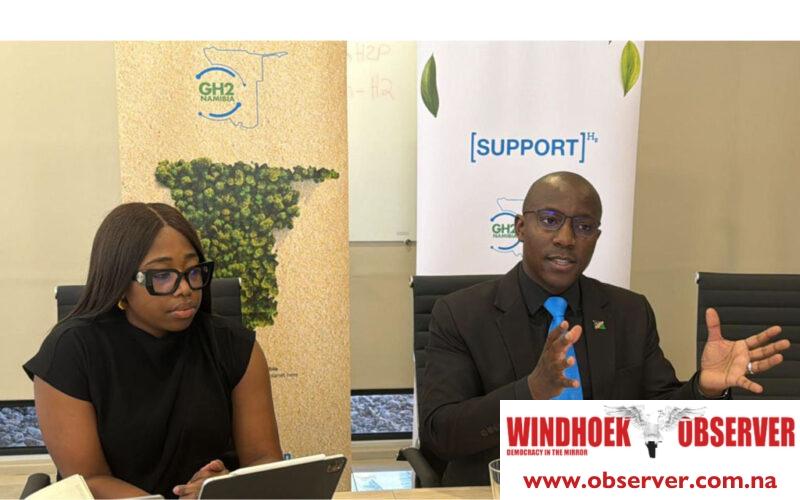Niël Terblanché
Namibia is not only on track to reduce its carbon footprint but also set to become a leading exporter of green energy, paving the way for sustainable economic growth and environmental resilience.
During a media briefing held at the Namibia Green Hydrogen Programme (NGH2P) office in Windhoek, on Wednesday, Green Hydrogen Commissioner James Mnyupe and Theopolina Kapani, Head of Technical and Construction at NGH2P, detailed the country’s ambitious steps towards a sustainable energy future.
The two discussed outcomes from a series of international engagements and feasibility studies that aim to position Namibia as a major player in green hydrogen production and maritime decarbonisation.
Mnyupe highlighted a strategic partnership with Envision Energy, a global leader in net-zero technology, which could transform Namibia’s renewable energy landscape.
With Namibia’s ideal conditions for renewable resources, particularly in regions like Lüderitz and Walvis Bay, Envision Energy plans to establish a major green ammonia plant near Walvis Bay by 2025.
“Once operational, the facility will produce approximately 500 000 tonnes of green ammonia per year, creating substantial local employment opportunities and supplying global markets,” he said.
According to Mnyupe, these plans align with Namibia’s ambitious Green Hydrogen and Derivatives Strategy, published in 2022, which envisions the development of “hydrogen valleys” – specialised economic zones that could host Net Zero Industrial Parks.
“Envision’s success in establishing zero-carbon industrial hubs in regions like Ordos, China, demonstrates the transformative potential of this model for Namibia,” Mnyupe explained.
He added that Namibia’s approach could not only attract green investments but also lead Africa’s transition toward a decarbonised economy.
Kapani discussed Namibia’s role in decarbonising the maritime industry.
Namibia participated in the Innovation Forum in London, hosted by the International Maritime Organisation (IMO) and UNEP.
Kapani stressed the importance of green hydrogen and ammonia as cleaner fuels, aligning with the 2023 IMO Strategy for the Reduction of GHG Emissions, which targets net-zero emissions from ships by 2050.
“As part of this decarbonisation effort, Namibia is primed to become a regional logistics hub for green bunkering,” she said.
One significant development is the planned construction of a €200 million ammonia storage facility in Walvis Bay by CMB.TECH, in collaboration with the Ohlthaver & List (O&L) Group.
“Expected to begin in early 2025, this facility will cater to an anticipated rise in demand for green ammonia. The port of Walvis Bay is set to become a key destination for ships powered by green ammonia, thanks to Namibia’s expanding bunkering infrastructure,” Kapani said.
She added that Namibia’s partnership with CMB.TECH includes plans to introduce dual-fuel ammonia-powered vessels to the port by 2027.
Namibia’s green aspirations were further emboldened when the NGH2P recently hosted a stakeholder engagement workshop on potential green hydrogen projects and offshore wind development.
According to Kapani, stakeholders from diverse sectors, including the National Planning Commission, Ministry of Agriculture, and Hyphen Hydrogen Energy, participated in the workshop to validate site selection and align on project priorities.
She said that with feasibility studies underway, Namibia aims to identify ideal locations for green hydrogen plants and offshore wind farms that will potentially be situated in the Southern Corridor Development Initiative (SCDI) in the Karas region.




